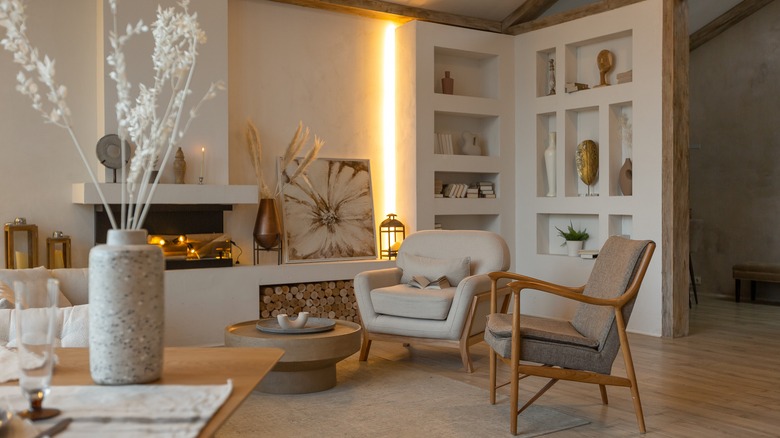HGTV's Emily Henderson Breaks Down Architectural Style And If It Matters
Many people focus on interior style when it comes to decorating their spaces. Whether it's classic mid-century modern or one of the newer aesthetics made popular on social media, like grand-millennial or coastal grandmother, these designs typically manifest in color schemes, decorative objects, and furniture styles. But what about the more permanent aspects of your homes that can't easily be bought and replaced? The architecture of a house or a room also evokes a specific style. Features like arched doorways, exposed wood beams, and coffered ceilings are often in place when moving into a home. Without renovation, these details will have an impact on the overall design. But should that matter while you're decorating your home?
"When you walk into a space that has a clear, cohesive look, something about that clarity feels reassuring and calming," HGTV's Emily Henderson wrote on her blog. However, she stresses that you don't have to feel locked into a style because of the architecture of your home. You can grasp a home's permanent details and still bring in other elements to make it feel personal to your preferences.
A starting point
If you have an ultra-modern home with wide open spaces, tall windows, and sleek lines, it may look a little strange to have it filled with antique Victorian furniture. The two styles don't match; most people would say they fall on opposite ends of the style spectrum. When decorating your home according to the architectural style, interior designer Emily Henderson says to "lean in but don't fall." A home's architectural style can be a starting point when making decorative decisions. "Look at the architectural style as an opportunity (not all houses have them), a built-in point of view," Henderson wrote on her blog. Use the features that are emblematic of the architectural style as the jumping-off point, not the entire design.
When selecting furniture, your home's architectural style doesn't have to be the theme. "Don't buy a Spanish-style sofa that you don't like just because you live in a Mediterranean bungalow," Henderson urged. Many interior designers swear by the 80/20 rule, where 80% of the main style compromises decorative details, while the accenting style makes up 20% of the design. Another way to combine aesthetics is to have a defining feature that runs through every element, like color, shape, or texture, in order to create a link between the different styles. Ultimately, creating the stylish mixture you love is more important than perfectly complementing your home's architecture.

